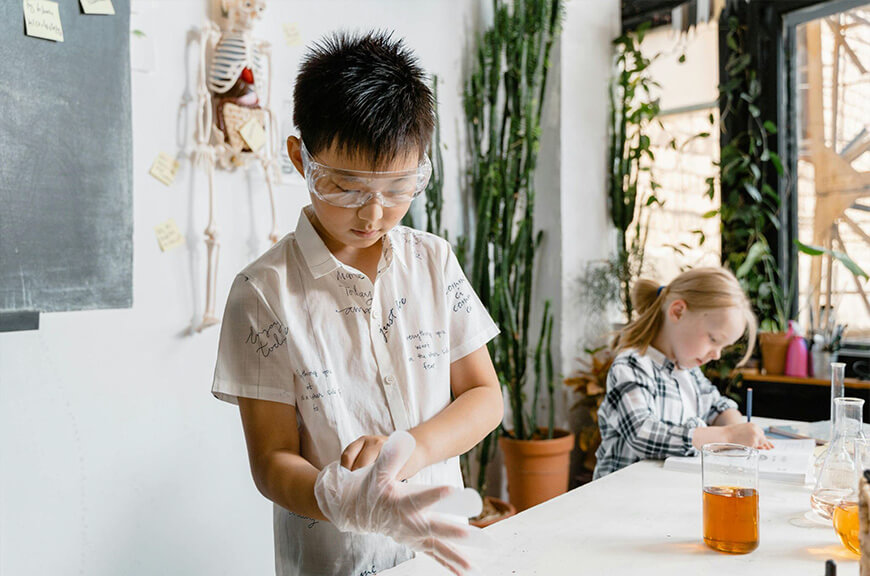
Prioritizing Children’s Eye Health and Safety: Why Vision Care Matters
In Honor of Children’s Eye Health and Safety Month August is Children’s Eye Health and Safety Month, a time dedicated to raising awareness about the importance of vision care and protection for kids of all ages. Children’s vision plays a significant role in their overall development, impacting their ability to learn, explore, and grow. With today’s increased screen use, exposure to environmental factors, and active lifestyles, prioritizing eye health and safety from a young age is more important than ever.
Let’s take a closer look at some of the common issues children face regarding their eye health, why routine eye care is essential, and how simple practices can protect their vision for the future.
The Importance of Eye Health in Childhood
Healthy vision is crucial in childhood because children rely on their eyes to absorb information about the world. Whether they’re reading, drawing, or learning to play sports, good vision helps children interpret and engage with their surroundings. It’s not uncommon for vision issues to go unnoticed in young children, especially when they may not have the words to describe what they’re experiencing. Often, children assume their experience is normal, unaware that their blurred vision or light sensitivity isn’t what everyone else sees.
Recognizing the signs of common eye issues early can prevent more significant complications down the road. That’s why eye health professionals encourage regular eye exams and preventative care, which can identify vision issues that may impact learning or cause discomfort, like dry eye, nearsightedness, or astigmatism.
Challenges to Children’s Eye Health
In today’s digital world, there are new challenges to maintaining eye health, even in young children. Increased screen time is a major one. Many children are spending more time in front of screens at home and school, which can lead to eye strain and fatigue, especially if they’re not taking regular breaks. Prolonged screen use also reduces blinking, a natural process that keeps eyes moist. As a result, children can experience symptoms of dry eye, such as redness, irritation, or a gritty feeling.
Environmental factors, like air conditioning, heating, or exposure to windy conditions, can also impact tear production, leading to dry, uncomfortable eyes. And as children engage in outdoor play and sports, they are at greater risk of eye injuries, making protective eyewear and safety awareness essential.
Recognizing Signs of Vision Trouble
For parents and caregivers, knowing the signs of potential eye issues in children can be crucial. Some common symptoms that may indicate a vision issue include:
- Frequent eye rubbing or blinking
- Complaints of headaches or eye discomfort
- Difficulty focusing on reading materials or classroom boards
- Squinting or covering one eye to see better
- Avoiding activities like reading or coloring, which require close vision
If any of these symptoms are observed, it’s a good idea to schedule a visit with an eye care professional to determine if there’s an underlying vision problem. Early intervention can make a world of difference, helping children succeed in school and other areas of life.
Tips for Protecting Children’s Eye Health
The good news is that many eye health challenges can be managed or prevented with a few simple practices. Here are some strategies for supporting children’s eye health:
- Encourage Regular Breaks from Screens The “20-20-20” rule—every 20 minutes, look at something 20 feet away for 20 seconds—helps reduce eye strain and gives kids’ eyes a chance to rest. Remind them to blink while using screens to keep their eyes lubricated.
- Provide a Balanced Diet Foods rich in omega-3 fatty acids, vitamins C and E, and zinc, such as fish, leafy greens, nuts, and carrots, promote good eye health. Nutrition plays a vital role in vision development and eye health maintenance.
- Prioritize Protective Eyewear When kids are playing sports or engaging in activities that could lead to injury, encourage the use of protective goggles or safety glasses. Also, wearing UV-blocking sunglasses outdoors helps protect young eyes from harmful sunlight.
- Create a Comfortable Home Environment Reducing the impact of dry indoor air by using a humidifier can make a noticeable difference in eye comfort, especially during dry winter months or in air-conditioned rooms.
- Schedule Regular Eye Exams According to the American Optometric Association, children should have a comprehensive eye exam by age three and then every year or two afterward. These exams can detect issues early, allowing for timely treatment that supports learning and development.
Reflecting on Children’s Eye Health and Safety Month
Children’s Eye Health and Safety Month reminds us of the importance of looking after young eyes. Vision is a precious sense that shapes how children interact with and understand the world around them. By encouraging healthy eye habits, scheduling routine eye exams, and ensuring they wear the right protective eyewear when needed, we can help protect their sight and ensure they’re ready to learn and explore without barriers.
As children return to school and settle into routines, let’s make eye health part of that routine, too. Empowering them with the tools to care for their eyes today lays the foundation for a lifetime of clear vision and healthy habits.




